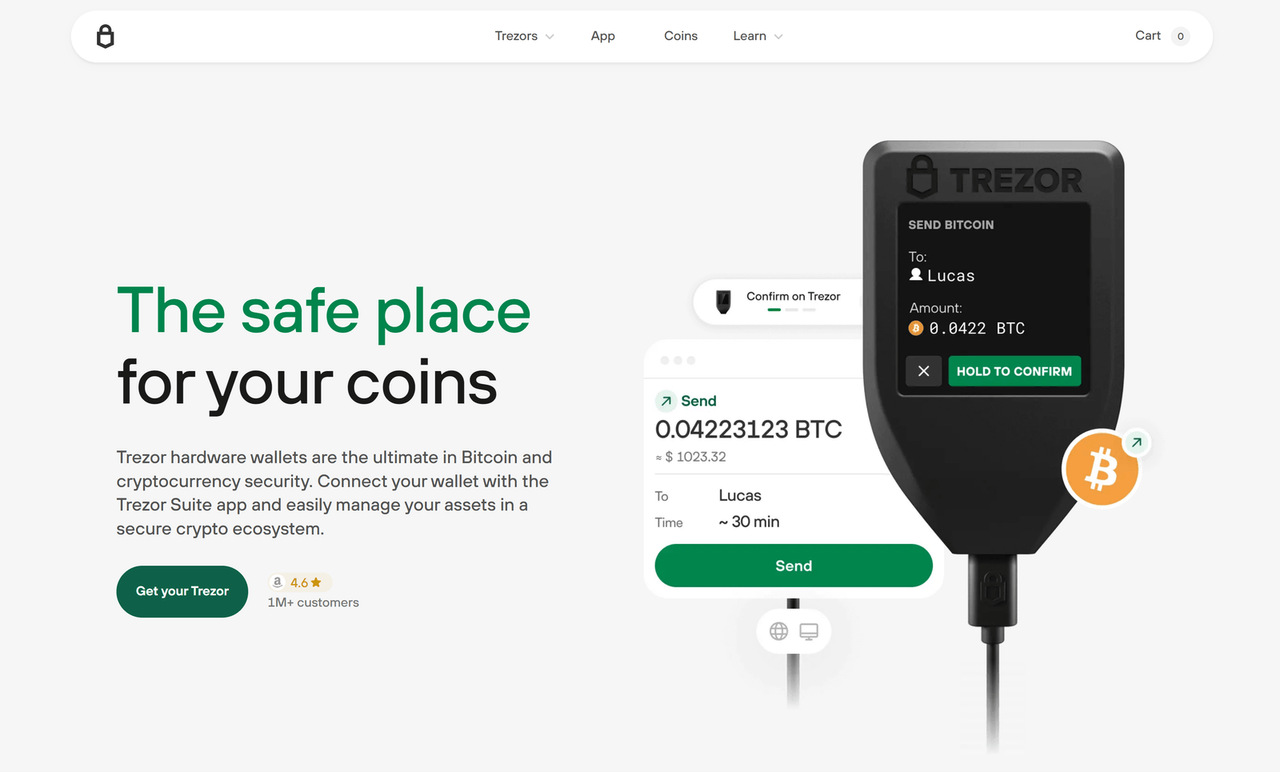Trezor Suite with MetaMask Integration
Trezor Suite with MetaMask Integration combines the best of hardware-level security with the flexibility of a powerful browser-based wallet. Many crypto users today want both the cold storage benefits of Trezor and the dApp and DeFi access provided by MetaMask. Fortunately, integrating Trezor Suite with MetaMask Integration is possible, giving users a robust and secure experience without compromising functionality.
Why Use Trezor Suite with MetaMask Integration?
Using Trezor Suite with MetaMask Integration provides security and convenience in one seamless system. MetaMask is a leading browser wallet used for connecting to Web3 platforms, NFTs, and decentralized exchanges. But on its own, MetaMask is considered hot storage. By using Trezor Suite with MetaMask Integration, your private keys remain in your Trezor device while interacting with MetaMask — improving security while keeping Web3 access intact.
Setting Up Trezor Suite with MetaMask Integration
To configure Trezor Suite with MetaMask Integration, you’ll first need to install both tools. Begin by setting up your Trezor device via Trezor Suite. This process involves generating a secure seed phrase and initializing your wallet. Once that’s done, install MetaMask in your browser and follow the instructions to connect your Trezor device. Setting up Trezor Suite with MetaMask Integration takes only a few minutes and doesn’t require any special software beyond a web browser and USB cable.
How to Connect Trezor Suite with MetaMask Integration
Connecting Trezor Suite with MetaMask Integration is a straightforward process. Open MetaMask, click on the profile icon, then select “Connect Hardware Wallet.” Choose Trezor as the device type. MetaMask will prompt you to export public keys, which are then used to generate wallet addresses without exposing your private key. Trezor Suite with MetaMask Integration allows your device to remain fully offline while MetaMask handles network interaction.
Benefits of Using Trezor Suite with MetaMask Integration
Trezor Suite with MetaMask Integration offers several benefits, making it a favorite combination among power users. The most obvious benefit is security — your private keys are never exposed to your internet-connected device. Another major advantage of Trezor Suite with MetaMask Integration is the ability to access Ethereum-based dApps and DeFi platforms directly from your browser without using a less secure software wallet.
Top Use Cases for Trezor Suite with MetaMask Integration
Trezor Suite with MetaMask Integration is perfect for a range of use cases, especially for those active in the DeFi or NFT space. Here are some of the most popular scenarios where Trezor Suite with MetaMask Integration is valuable:
- DeFi Access: Trezor Suite with MetaMask Integration allows users to stake, swap, and lend assets on platforms like Uniswap and Aave securely.
- NFT Trading: With Trezor Suite with MetaMask Integration, users can mint and trade NFTs on OpenSea without risking wallet compromise.
- Web3 dApps: Trezor Suite with MetaMask Integration provides trusted access to decentralized applications such as ENS and Snapshot.
- Secure Transactions: Trezor Suite with MetaMask Integration ensures that every transaction is confirmed physically on your Trezor device.
- Multi-chain Support: Trezor Suite with MetaMask Integration works across Ethereum and EVM-compatible chains like Arbitrum, Optimism, and Binance Smart Chain.
Security Tips When Using Trezor Suite with MetaMask Integration
While Trezor Suite with MetaMask Integration offers enhanced security, users must follow best practices. Always verify URLs when interacting with dApps. Keep firmware and browser extensions updated. Use a strong PIN and never share your recovery phrase. Trezor Suite with MetaMask Integration relies on both hardware and software; if either is compromised, your funds could be at risk. Vigilance is key to staying protected.
Limitations of Trezor Suite with MetaMask Integration
Trezor Suite with MetaMask Integration, while powerful, isn’t perfect. One common limitation is compatibility — certain tokens or networks may require manual configuration. Also, Trezor Suite with MetaMask Integration may prompt users multiple times for signature approvals, which can slow down fast-paced transactions. Additionally, MetaMask’s interface doesn’t always reflect Trezor-specific capabilities like advanced multi-sig or passphrase protection.
Trezor Suite with MetaMask Integration vs. Ledger Live and MetaMask
Some users compare Trezor Suite with MetaMask Integration to Ledger Live with MetaMask. While both setups involve hardware wallets and MetaMask, the user experience differs. Trezor Suite with MetaMask Integration emphasizes open-source transparency and community-driven development. Ledger Live has broader native integration but is closed-source. Choosing between Trezor Suite with MetaMask Integration and other combinations depends on user preference, tech comfort, and feature needs.
Frequently Asked Questions about Trezor Suite with MetaMask Integration
Many users have questions when first exploring Trezor Suite with MetaMask Integration. Common concerns include compatibility, gas fees, or lost connections. The good news is that Trezor Suite with MetaMask Integration is backed by an active support community and thorough documentation. Issues like stuck transactions or hardware disconnects are typically easy to fix with simple browser resets or firmware updates.
Final Thoughts: Trezor Suite with MetaMask Integration
Trezor Suite with MetaMask Integration is one of the best combinations available for users who want both hardware wallet security and the freedom of Web3. By bridging cold storage with browser-based interaction, Trezor Suite with MetaMask Integration offers the best of both worlds. Whether you're a beginner or an advanced user, integrating these tools puts you in control of your crypto journey without compromising on safety or usability.
Made in Typedream
